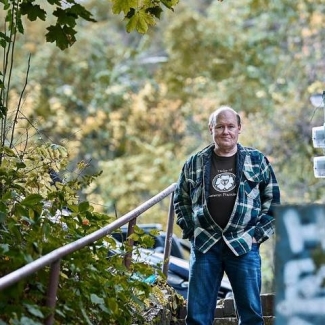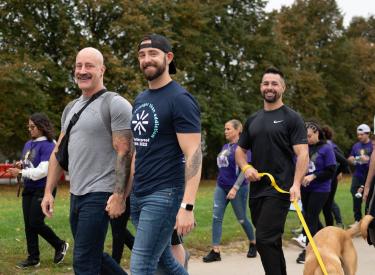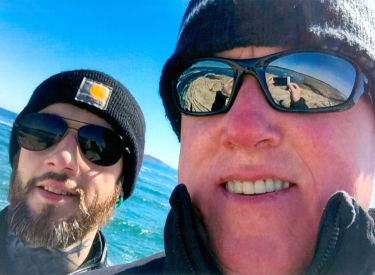
Are 12-Step Meetings Right for You?
12-step programs can be an invaluable resource for people in recovery, especially when combined with other treatment services like medications and professional counseling. When people willingly attend meetings with groups like Alcoholics Anonymous, Narcotics Anonymous, or SMART Recovery, studies show that these programs can have a positive impact on recovering from substance use disorders.
What’s it like to participate in these programs? We asked three Shatterproof Ambassadors to share their experiences.
“I found my place.” - Barbara Lesky
I struggled with recovery. I can look back and now see that I was picking and choosing the things I wanted to do. Unfortunately for me, I had to get to a place of complete surrender. I tend to complicate the simplest things. In meetings, at first, I heard what I wanted to hear and saw what I wanted to see.
Getting to a place of complete surrender for me meant admitting I did not want to live in a place of shame, guilt, and pain. It meant being willing to ask for help and taking the suggestions from those that have come from where I was. I met these people at AA meetings.
In the first 90 days, I went to 5-6 meetings a week. It was hard to fit these in although I kept reminding myself what I kept being told—anything I put in front of my recovery is what I would lose first. I tried a variety of meetings. After raising my hand, telling people I was new, I found my place. I find the more I raise my hand, the easier it is to talk. The more I speak, the more I find comfort in where I am, the more open and honest I am the more receptive others are.
Meetings are my safe place. I can count on sitting in a chair and breathing deeply, learning how to live life on life’s terms. I have learned to rely on others and their experiences when I am struggling. I see now I am the common denominator when I struggle.
AA and the people were my “higher power” when I started going to meetings. But through these people, their experiences and sharing, I have developed my own perception of a loving, kind, and forgiving higher power. This gives me the peace and assurance that I am never alone. I can now see I have been given more than I have lost. I have peace within despite the terms of life I lived through. I have surrounded myself with friends in the program that support me when life is hard.
I still go to meetings. I have a home group and I am in service. This is my “church,” and my higher power speaks to my heart when I’m in pain or struggling. I am now at a place where I help others find what they need out of recovery. I try to pass on what others have given me: give yourself time, be kind to yourself and know that struggles will happen and often that is how we grow.
“There has to be face-to-face contact in early recovery, or the chance of returning to active use is much too great.” - William Bradley
Meetings. When I first found recovery, it was stressed to me that I attend plenty of meetings. A meeting a day. Ninety meetings in ninety days. And I did it—I attended lots of meetings. Two or three a day. In church basements, rec centers, hospital wards, even jail cells when allowed. I made it to every meeting in my hometown that I could find. It didn’t matter what group was holding it. AA, NA, both. All that mattered for me was that there was recovery present in the people who attended with me.
Treatments centers and special recovery houses were few and far between back then. There was one halfway house and one small detox center (the back room of the local jail!) available in Parkersburg, West Virginia in the late 1980s. And as my military service took me to other places, I found the same lack of facilities. So, meetings were where recovery took place, and since I wanted more than anything to recover, meetings were where I went.
As time passed, I found that the meetings were growing a bit stale. New groups popped up; Celebrate Recovery, SMART recovery, Codependents Anonymous, and others. I tried them all out for a while, but always found myself returning to the stalwarts: AA and NA. For me, Alcoholics Anonymous was always the stronger of the two. I had a harder time connecting to the people in the meetings the longer I stayed in recovery. I did fall out for a while, but upon my return the same issues remained. The people in recovery continued to evolve due to changes in treatment and therapy, but the meetings seemed to stay the same.
Around 2010, I began to drift away from meetings altogether. Today's meetings are not really a part of my recovery anymore. I still check in online from time to time with In the Rooms or MARA (Medication-Assisted Recovery Anonymous), but in person meetings aren’t a part of my recovery anymore.
I am grateful to what I learned over the years from “working” the 12 Steps. And, for a newcomer straight out of rehab, I still recommend meeting attendance so that they can get established in the recovery community and build a support network locally that they can call on in a time of need. Online meetings are never enough. There has to be face-to-face contact in early recovery, or the chance of returning to active use is much too great.
“The meeting makers make it.” – April Franklin
I am a person in long-term recovery. My clean and sober date is September 16, 1987. Over the years, I have tried a wide variety of 12-step meetings, in a variety of different “second A” programs (Alcoholics Anonymous, Narcotics Anonymous, Cocaine Anonymous, Overeaters Anonymous, Sex and Love Addicts Anonymous… the list goes on and on). Additionally, I have tried various venues: Church basements, Alano Clubs, parks, beaches, people’s homes. I have also checked out a wide variety of times of day: early morning, lunch hour, and evening.
At 34 years of sobriety, here is what I have settled on: a 7 AM AA meeting, every single day, in a small run-down house close to the beach. Here’s why. I’ve found that the time of the day for a meeting sets the overarching tone of the group. Morning meetings are focused on setting the right attitude for the day to then head off to work. Noon meetings are usually a mix of retired folks, unemployed people, musicians that sleep late, and people that are in crisis and need an extra meeting. Evening meetings, I have found, are people that really need to complain about their day and dump their troubles before they head home for the evening. Meetings that meet every single day (no matter the time of day) are usually a core group of attendees who love and support each other.
Interestingly, the “regulars” would go to the end of the earth to save their brothers and sisters from the room, all without ever knowing their last names. This also means that no one cares if you are from “Yale or jail.” Truly, it is not unusual in my meeting to have an anesthesiologist, a couple of attorneys, a young man who’s re-starting his life and is working at a sandwich shop. The bottom line is that no one cares how much money you have or what your work is—we simply care that you want to stay sober today.
Over the course of my recovery time, I have embraced a few valuable principles about regular attendance in some sort of a 12-step program:
- Meeting makers make it. Meaning, if I attend regularly, I have a better chance of maintaining my sobriety.
- I came for my drinking and stayed for my thinking. I’ve found that I must be with like-minded people to check my thinking.
- I continue to attend meetings to pay forward to any new person what was so freely given to me during my early days. This is a debt I will never be able to fully repay.






